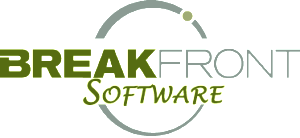
Problem #3: Where does it hit my general ledger?
Now that we’ve traveled to the future by a few trillion years and completely rebuilt that accounting system from the ground up to understand what the heck a cabinet is, where does all this stuff go when it hits your general ledger?
Last time I checked most cabinet catalogs include things like hardware, counter-tops, and accessories. Most of you now just jam all that stuff into a giant bucket called “Cabinets” but the best dealers out there know better. They know the key to driving more profitability is to understand what that profitability is for each of their product segments first. When you blend all that stuff, the information you need gets “greyed out” of the picture making it impossible to tell any longer if you’re struggling with counter-tops or cabinet profitability this month.
Problem #4: It’s not just inventory parts
The reality is your accounting system isn’t going to really work with just that code from 2020’s export. It actually needs to know the salesperson on the job, customer, job, supplier, sales tax & use tax information, labor charges, and more.
This is usually forgotten until later – but not to worry. Your employees will soon be screaming reminders at you because they’ll have to rekey all this information multiple times to get it all to work. That nice little 2020 integration project that was supposed to solve everything actually just created more rekeying for everyone.
Problem #5: Non inventory parts / generic inventory parts
If you choose this route, good luck. Not only does this mean you have to manage your pricing, costing and promotions in design software (the kiss of death), but it actually means you’ll have to be able to also tag some sort of G/L codes or product categories to each line item so you know where to put it when it makes its way over to your accounting software. That also means if you make an “adjustment” to win the deal, that adjustment has to be properly allocated across the line items so you don’t end up having a giant bucket of dollars and no way to allocate it in your accounting system. Did the salesperson discount labor or merchandise to win that deal – or was it cabinets or counter-tops?
The other problems with this approach are that it completely throws reporting for a loop. How popular was that mocha glaze? What about that style? Nobody knows because those details are buried in a long description as a non-inventory or generic/temporary inventory part.
Problem #6: Too many hiccups spoiled the broth
The cabinet business is the business of complexity and exceptions. And if you don’t understand all the exceptions, your employees will have to rekey around them. Unless you’re willing to spend a decade or more like we did understanding all the little gotchas to this mess, within a few weeks your employees will be inundated with import files that don’t really work. The discrepancies will have to be tracked down and resolved manually and before you know it someone will logically conclude that it’s just easier to rekey the information from scratch. At least that way they will have the confidence to know it’s right.
In the end, your 2020 integration project dies an ugly death. And since no one wants to call out the elephant in the room, the people at the top of your organization who could make things better won’t because they think everything is hunky-dory.

